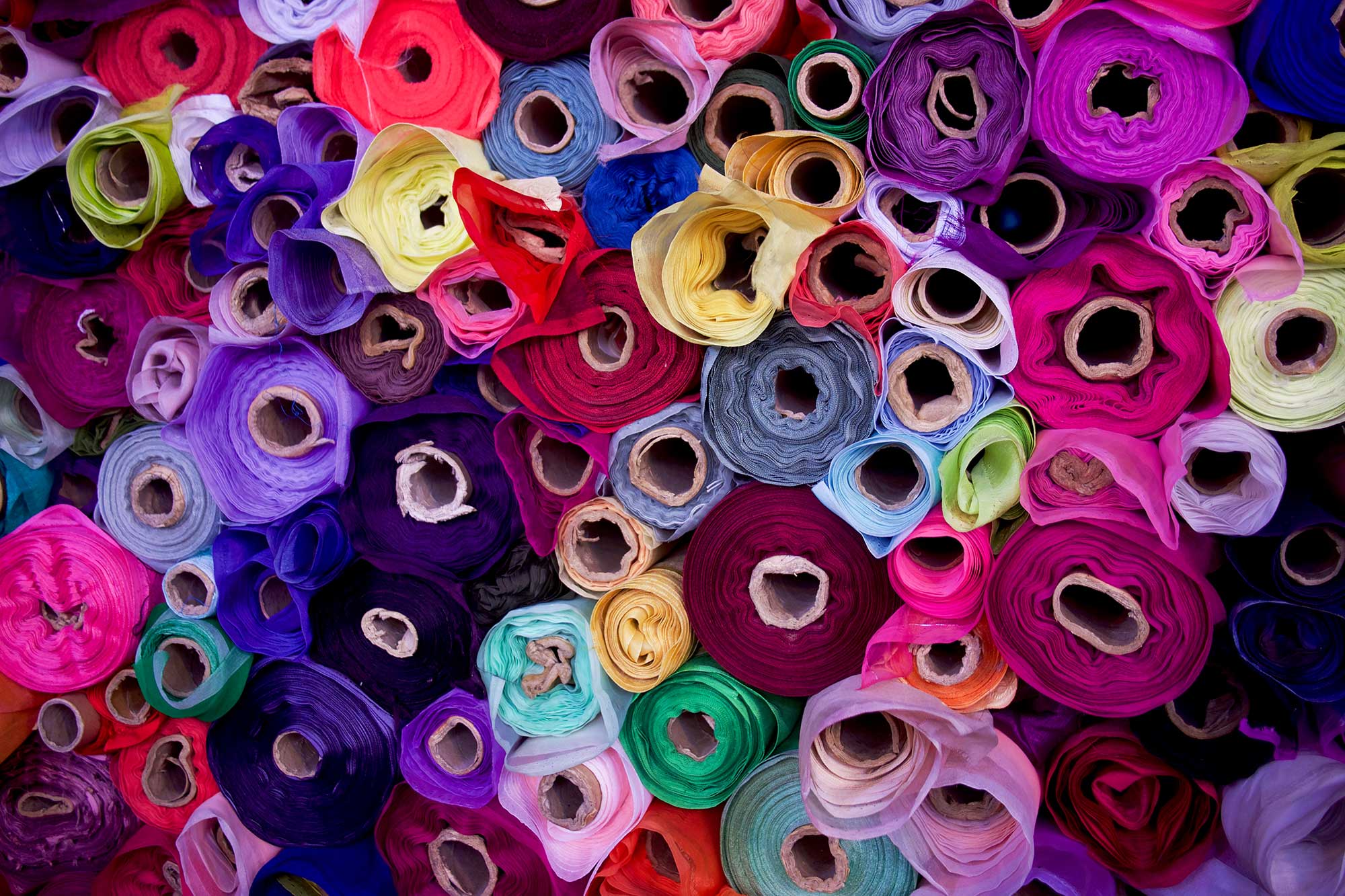The industry that fills our closets is notoriously wasteful. From fast fashion hauls to the resource-heavy creation of materials, the global fashion industry creates more than 92 million tons of textiles that go to waste every year. That’s countless dresses, sweaters, bags, and shoes decomposing in landfills or clogging up ecosystems. But loads of fabric never even become garments to begin with. There’s no good estimate for just how much of this so-called deadstock fabric is out there, but more brands are starting to pick up the scraps. Is deadstock fabric sustainable, and is using this material all it’s cracked up to be?
What is deadstock fabric?
The idea of using excess material has become more popular with designers over time—take recent collections from Christy Dawn and Reformation, for example. The term “deadstock fabric” was coined in the early 2000s and applies to fabric that is not in production anymore and would likely otherwise be discarded. Fashion houses order a certain amount of yardage per season, and that trendy summer floral doesn’t always make it onto store floors.
Jessica Schreiber, CEO of Fabscrap, a company that buys deadstock, says manufacturers create so much waste due to “purchasing minimums” at textile mills. Sometimes these minimums are huge, and if it all doesn’t get used, the rest often ends up far from fashion hubs like New York or Paris, instead polluting low-income communities or countries. “It seems like a really hidden and kind of niche problem…globally, it’s a huge amount of waste that touches so many different countries,” Schreiber says.
Is deadstock fabric sustainable?
It depends. Huantian Cao, a professor at the University of Delaware and the school’s co-director of the Sustainable Apparel Initiative, says that using deadstock fabric is more sustainable than creating new textiles. After all, it keeps perfectly good materials out of landfills. “It means less garbage, so that part of it isn’t greenwashing,” he says.
Using deadstock fabric does have potential downsides. For example, it can create pathways to keep less-than-eco friendly materials (take polyester and nylon) within the fashion industry. While it is great to reuse these materials, reaching for deadstock faric can delay conversations about weaning ourselves off of fossil fuel–sourced materials.
The deadstock fabric trend creates an opportunity for a new eco gimmick. There’s a risk that companies will overproduce textiles on purpose in order to have waste or deadstock fabric on hand. This is woefully counterproductive when the goal should be to produce less and use what we already have, not to create a demand for a new fad. Using castoff fabric should be part of a label’s sustainability picture—along with other measures like sourcing natural fibers and being transparent about their supply chain.
So, should I buy deadstock fabric?
That also depends. For starters, it’s important to remember a couple things. First, sustainability is not something you can buy. Second, while there is a lot of tossed fabric around, you’re probably not going to see deadstock collections popping up in big chains. Major retailers like Macy’s or H&M often are the original purchasers, and their leftovers are only enough to meet the needs of smaller designers and costume makers, Cao says. “[It’s] not made in or sold into the mass production fashion companies because of the relatively small quantity of the fabric available,” he explains.
Deadstock fabric is often purchased by smaller retailers and designers who repurpose it into their clothing collections. Often, businesses like Fabscrap will purchase deadstock fabric from larger companies, making it easier for the smaller designers to source and use excess materials. “We receive not just deadstock fabrics, but all textile waste from their design process,” Fabscrap CEO Schreiber says. “It’s a mix of usable fabrics—usable leathers, yarns, trims, but also fabric swatches from mills mock-up and mutilated garments from the design process.”
How to responsibly incorporate deadstock fabric into your wardrobe
Shop your closet
The most sustainable outfit is still the one hanging in your closet, with pre-loved items from the vintage or thrift shop coming in second. Think of these garments as deadstock-by-a-different name; they weren’t “dead,” exactly, just hibernating.
Avoid big brands
Deadstock fabric doesn’t scale, so seeing it trotted out in mass production should raise red flags that the brand might be overproducing its fabrics on purpose. Indie or boutique labels making limited runs are way more likely to be using genuine castoffs.
Check the labels
If the only “sustainable” thing a brand does is claim to reuse old fabric, you should probably pass. Also, if the material’s or garment’s construction is low quality or it’s made of plastic, being deadstock won’t magically make it green. Ethical fashion rating website Good on You offers up a few great options: the R Collective, Citizen Wolf, and Kalaurie to name a few. For fast-growing little ones, items from small labels like First Fittings can make for a unique, eco-friendly look.
Take care of what you buy
Treating textiles as disposable has to stop as well, Cao adds. Even if your new skirt or sweater is made of rescued deadstock fabric, it still deserves to be worn and cared for as long as possible. “Extending the useful time while making the [item] last longer is also important,” he says.

